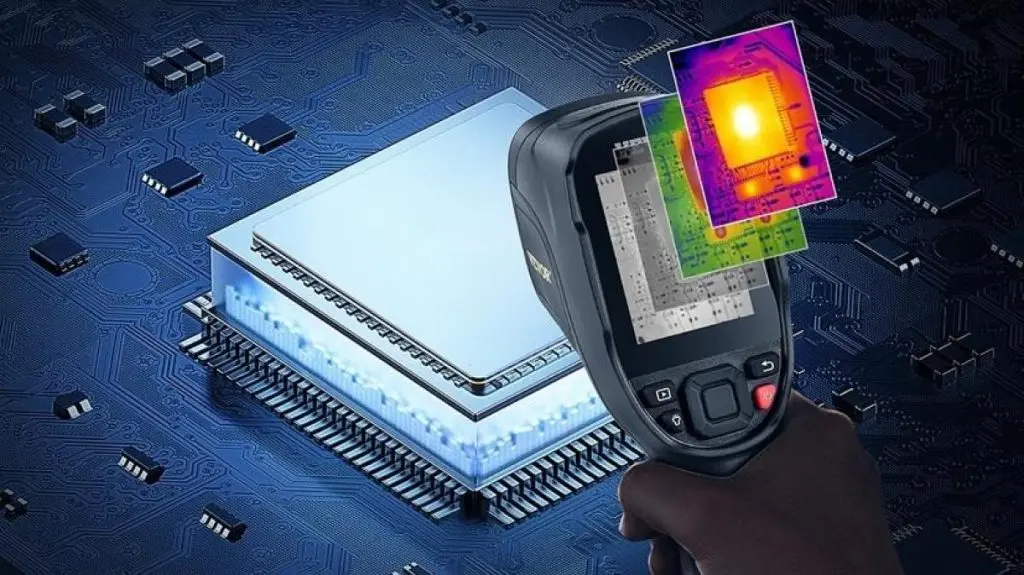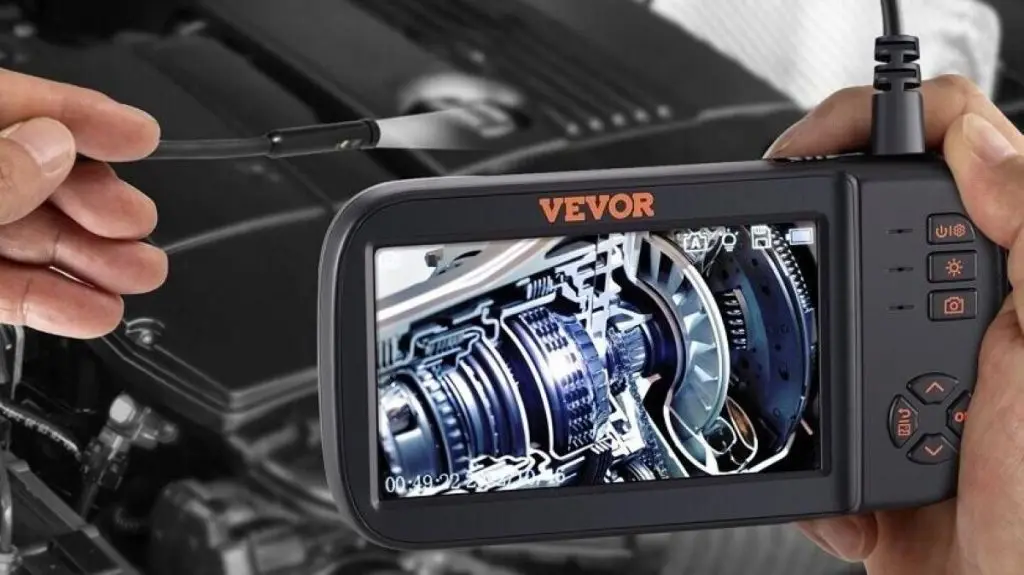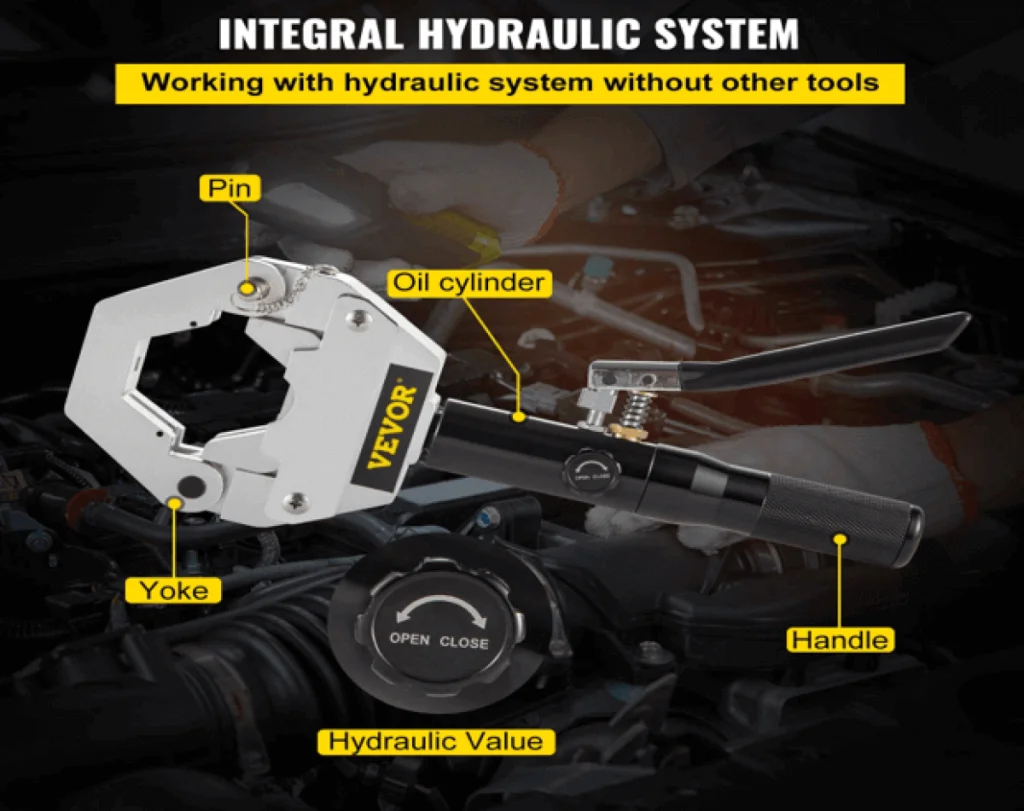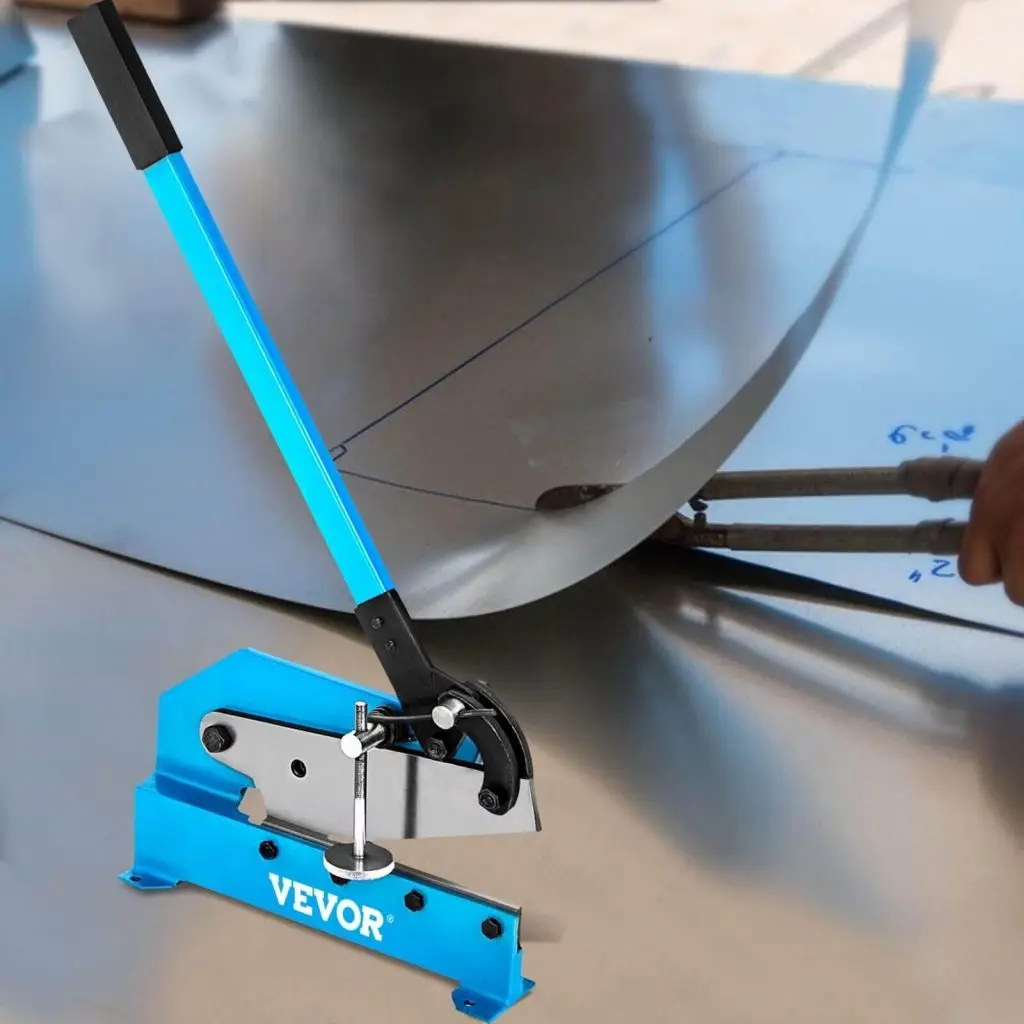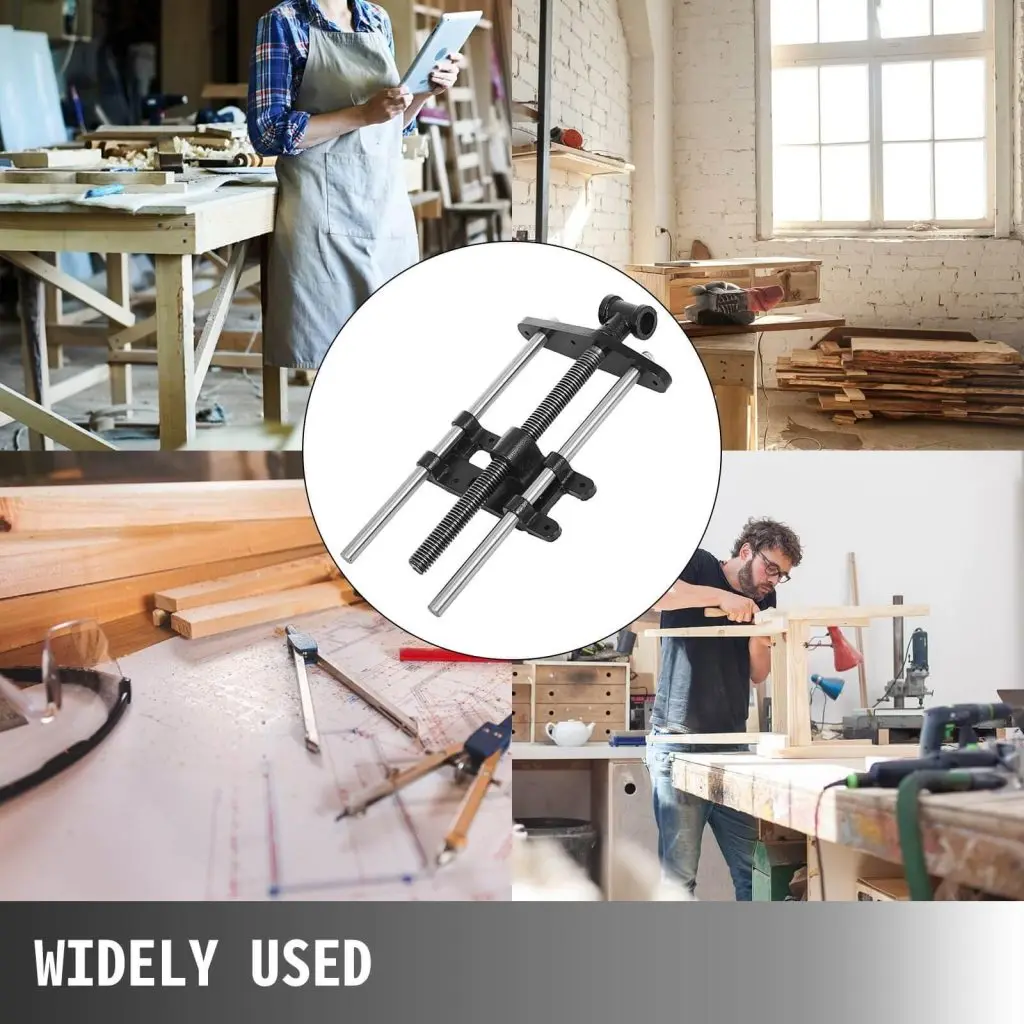A thermal imaging camera uses infrared technology to detect heat and produce images that can be used for a wide range of applications. For instance, thermal imaging cameras can be used to detect heat sources in dimly lit environments or identify areas of heat loss in your home. Whether you seek to detect heat sources in dimly lit environments, a good attribute for wildlife enthusiasts, or identify areas of heat loss in your abode, the benefits of thermal imaging are within your grasp.
The practical applications of a thermal imaging camera, also called an infrared thermal imager, were once exclusively reserved for military and professional endeavors. Despite their origins in military and professional settings, thermal imaging cameras are now widely available to everyone.
5 Best Thermal Cameras Reviewed in 2023 (For Home & Work)
01: VEVOR Thermal Imaging Camera
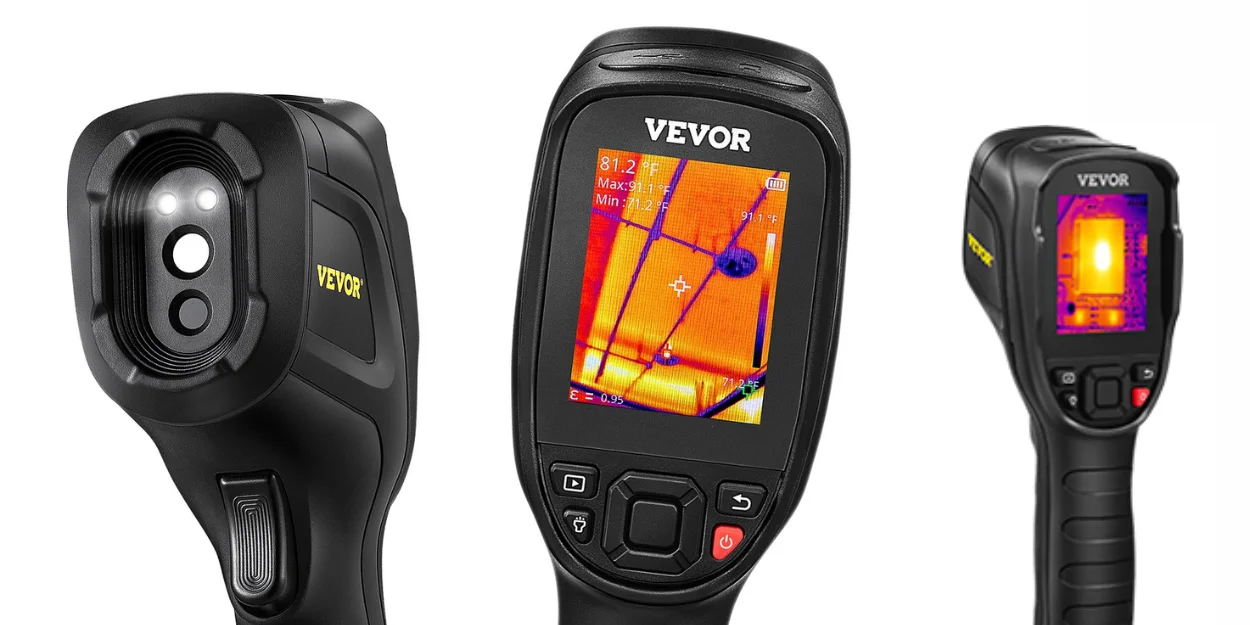
The VEVOR thermal imaging camera is the perfect tool for professionals and homeowners alike. It allows you to see the invisible infrared waves and pinpoint the source of problems during home inspections, HVAC troubleshooting, firefighting, and professional detection of electrical or mechanical systems. With this camera, anyone can easily find problems with missing insulation, faulty flashing, and air leaks.
One of the most notable features of the VEVOR thermal imaging camera is its ultra-clear image. With 240×180 IR resolution and a thermal sensitivity of less than 0.04°C, this infrared camera offers full-screen temperature measurement with a high-definition picture (-4°F to 662°F). The automated thermal tracking technology will allow you to observe the lowest and maximum temperatures intuitively. Additionally, with a 20 Hz refresh rate, this camera works as a thermal scanner and can detect people or animals in the dark with ease.
This camera also has four color palettes: rainbow, iron, black hot, and white hot. You may alter emissivity and choose several color palettes to take precise and understandable pictures. You won’t miss anything with it because of the 2.8″ broad viewing screen.
Features and Specifications:
● Its thermal sensitivity of 0.07°C allows it to capture even the slightest temperature changes.
● A temperature range of -20°C to 450°C (-4°F to 842°F), making it suitable for a variety of applications.
● Four color palettes – rainbow, iron oxide red, cold color, and black and white – give you more flexibility when analyzing images.
● Store up to 60,000 images in its 8GB memory card, and you can transfer images to your computer via USB.
● It has an adjustable emissivity setting, essential for accurate temperature measurements.
Pros:
● The VEVOR Infrared Thermal Imager has a high resolution and thermal sensitivity, making it an excellent tool for identifying temperature changes.
● Its wide temperature range and adjustable emissivity make it suitable for various settings.
● The camera’s color palettes give users more options when analyzing images, and its memory card can store many photos.
02: FLIR ONE Edge Pro
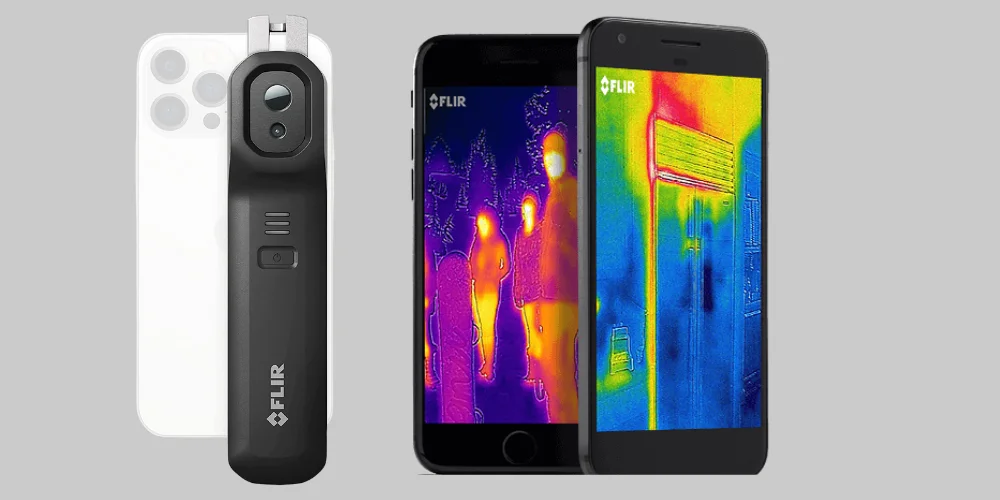
The FLIR ONE Edge Pro is a state-of-the-art wireless thermal-visible camera fully compatible with smartphones and tablets. Unlike the previous FLIR thermal imaging camera that required plugging into the phone’s bottom, the FLIR ONE Edge Pro can be easily attached to iOS and Android devices via a spring-loaded clip. This makes it the perfect imaging tool for workplaces with mixed-platform employee populations or individual users who switch between devices frequently.
FLIR ONE Edge Pro has wireless capability. Users can use it up to 30 meters (100 feet) from the phone through Wi-Fi and Bluetooth. This means you can take thermal images of hard-to-reach areas without constantly moving your device around.
The One Edge Pro also uses the Flir One app, which is compatible with Android and iOS devices. It’s easy to connect the camera to your phone using the app wirelessly: Open the app after turning on the camera, and it should recognize the device and ask you to join its ad hoc Wi-Fi network.
Features:
● Establishes a wireless connection with iOS and Android devices
● Facilitates inspections of out-of-reach targets
● Maintains connectivity with your device at a range of up to 30 meters (or 100 feet)
● Attaches to your smart device for effortless one-handed operation
● Enables you to capture detailed and high-quality thermal images anywhere, using your smart device
● Boasts advanced imaging technologies, such as VividIR™ and MSX™
● Delivers thermal resolution of 160×120 (equivalent to 19,200 pixels)
Pros:
● A reliable thermal imaging system
● Can scan difficult-to-reach areas
Cons:
● Video stream that lags money
● Inferior to specific Flir phone cameras in resolution
03: Seek Thermal Reveal Pro
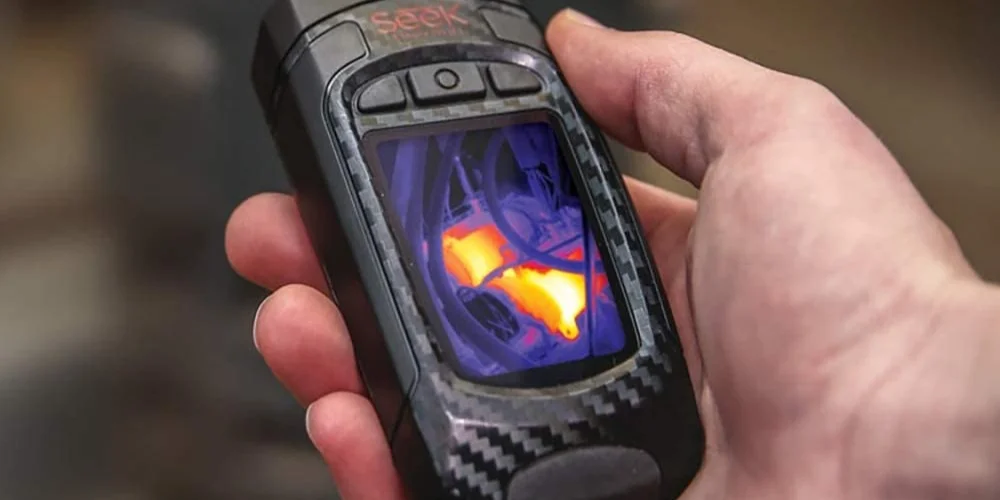
Introducing Seek Thermal’s latest invention, the Reveal Pro thermal imaging camera, – a gadget that fits in your pocket but packs a punch! Equipped with advanced features, its image quality rivals the FLIR E6, making it a top contender for pocket-sized thermal cameras.
Unlike similar gadgets, the Seek thermal imaging camera boasts an impressive 300-lumen light built into its design, providing ample brightness for all your imaging needs. With a separate button on the side, this flashlight feature can be used without turning on the camera.
The Reveal Pro also has 4 GB of internal storage and can store images in PNG format. Each print is a mere 226 KB, ensuring you will never run out of space. If you do, that’s a problem that needs to be addressed.
With a resolution of 320 x 240, the Reveal Pro blows the FLIR E6 out of the water (which has a resolution of 160 x 120). Although the screen is taller than it is wide, it still makes for a remarkable visual experience. The FLIR C3 thermal camera, a pocket-sized alternative to the E6, offers only 80×60 resolution, making the Reveal Pro a clear winner regarding image quality.
Features:
● Emissivity Control for choosing desired settings quickly
● Compensation for various surface materials for accurate readings
● Multiple User Modes for Normal, Spot temperature, and Level & Span
● 2.4″ color display
● 4x Digital Zoom for closer inspection
Pros:
● The Seek Reveal is a beautifully packaged product with a friendly and intuitive user interface.
● It provides the capabilities most often needed in an infrared imager.
● It is useful if you can’t afford or can’t justify the price for a more serious IR imager.
● It has a decent-resolution optical image overlay to add visual detail and provide context for the IR image.
Cons:
● If you’re not far enough away, seeing details and understanding the image is challenging. But from a distance, finer thermal details are often impossible to see.
04: Flir One Gen 3 Thermal Camera
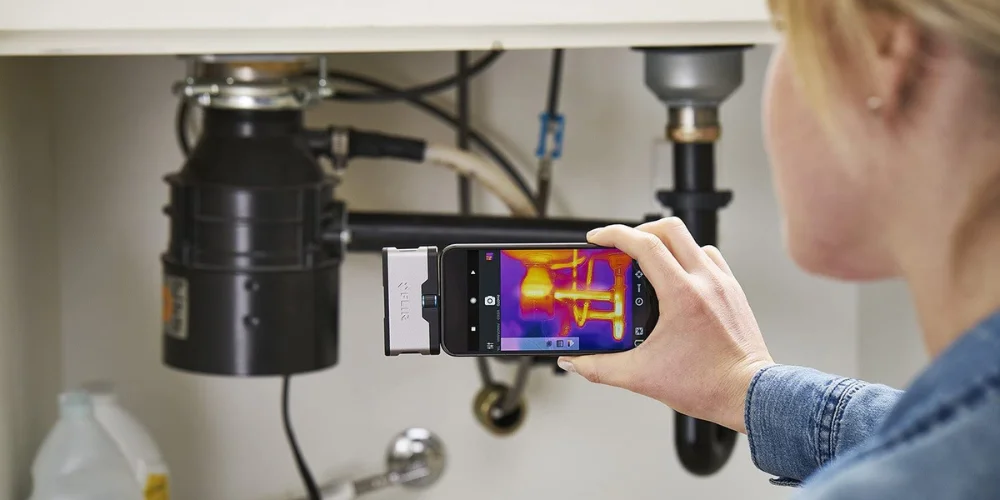
Only break the bank on a handheld thermal camera if you frequently use thermal image scans. Instead, opt for this budget-friendly smartphone thermal camera attachment that can detect temperatures from -4 to 248 degrees Fahrenheit. Attach it to your phone’s base, and voila! Your smartphone is now a thermal camera.
The secondary visual camera, which has an 80 by 60-pixel thermal resolution and can also record fine details, allows for seamless blending of thermal pictures. It is simpler to recognize an object with the help of this feature. Plus, with its direct connection to your phone, you can quickly send photos and videos over Wi-Fi or your mobile network.
Features:
● Captures thermal readings from -4 to 248 degrees Fahrenheit
● Direct connection to the phone’s base
● 80-by-60-pixel thermal resolution
● The secondary camera captures visual details for a blend of thermal and visible images
● Immediate access to Wi-Fi or mobile network for instant sharing of photos or videos
Pros:
● Share photos and videos instantly using Wi-Fi and mobile connectivity.
● A secondary camera is built-in, which combines thermal and visual images.
● Comes with a carrying case and a USB cable for easy and organized storage.
● Compatible with a wide range of leading smartphone brands.
Cons:
● Some users have reported a few software issues and limited battery life.
05: FLIR TG165 Thermal Camera
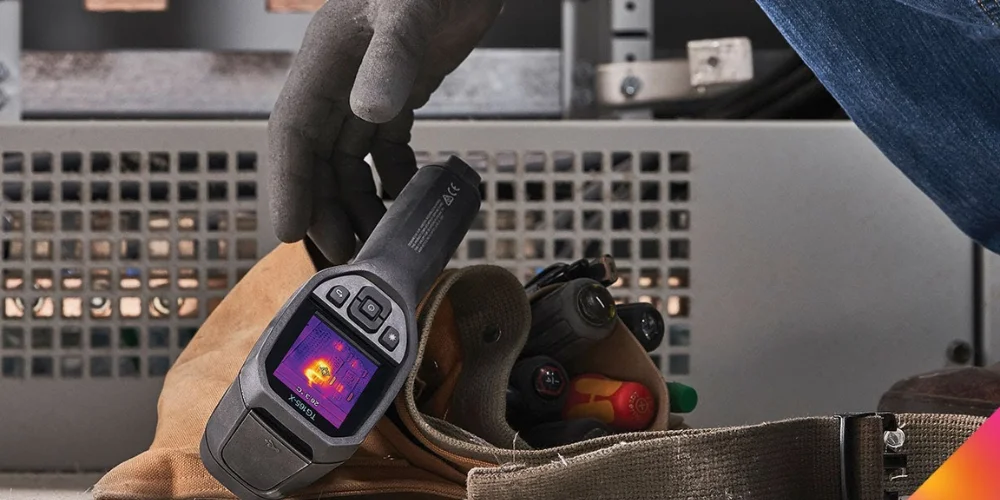
The FLIR TG165 is a thermal camera built like a tank and delivers outstanding performance for all your imaging needs. With a wide temperature range and impressive thermal sensitivity, this camera is the perfect tool for professionals in various fields, from building inspection to construction.
The FLIR TG165 is incredibly user-friendly, requiring no special training to operate. Just turn it on, point it at the object you want to measure, and let the camera’s dual-laser system guide your aim. The built-in handle makes it comfortable to use, even during extended periods.
This thermal camera is designed to withstand the most challenging conditions, with an IP54 water resistance rating and a drop rating of 6.5 feet. You can use it confidently in all weather and terrain without worrying about damage.
Features:
● Dual-laser system for easy aiming and a built-in handle for comfort
● Long battery life of upwards of five hours for uninterrupted use
● 2″ display for viewing thermal images with an 80 x 60-pixel resolution
● No special training is required for easy use
● Solid thermal sensitivity suitable for most imaging applications
Pros:
● Temperature tolerance
● Robust and enduring construction
● Extended battery longevity of 8 hours
Cons:
● Absence of MSX image enhancement feature
● The display size is relatively small
How Do I Choose a Thermal Imaging Camera?
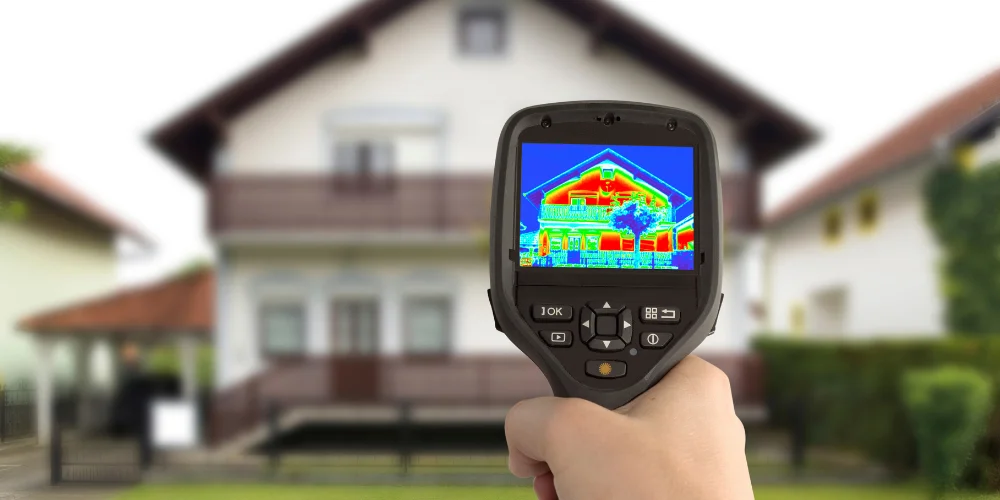
Embarking on purchasing a thermal imaging camera can be daunting, as the market is flooded with various options, each with unique features and capabilities. To make an informed decision, one must consider several factors before purchasing. Let’s explore the essential aspects of selecting a thermal imaging camera that meets your needs.
01. Temperature Range:
The temperature range of a thermal imager is defined by the highest and lowest temperatures it can measure. Knowing the camera’s temperature range is crucial before selecting one for a specific application.
By understanding the temperature range, we can ensure that the camera can accurately measure the temperatures we need for our application.
02. Thermal Sensitivity:
Thermal sensitivity, also known as Noise Equivalent Temperature Difference (NETD), is the smallest temperature difference a camera can detect without being affected by its noise. The higher the thermal sensitivity, the more detailed temperature information the camera can provide.
Conventional cameras typically have a NETD of 80mK to 100mK. However, more sensitive cameras can provide greater detail at a competitive price. Some cameras boast a NETD as low as 40mK or even 20mK to 10mK for high-performance cameras (usually cooled and expensive).
03. Resolution:
The resolution of the thermal camera sensor, or detector, is crucial in determining the image quality. The resolution indicates the number of pixels in the heat detector. A higher resolution means sharper and more accurate images with more precise measurements.
High-resolution infrared cameras can measure smaller targets from greater distances, providing more reliable and accurate results. The most commonly used resolutions in the industry are 80×80, 160×120, 382×288, and 640×480 pixels in LWIR and 764×480 pixels in NIR.
04. Field of View:
Its lens determines the field of view (FOV) of a thermal camera and refers to the area of the scene that the camera can capture. A wider field of view allows a larger size to be caught with the thermal camera.
Some cameras offer multiple lenses for different applications, increasing their versatility. Understanding the distance at which the camera will be installed and the size of the smallest detail we want to measure in the scene will help identify the ideal optics for our application.
05. Image and Video Capture:
Acquiring top-notch imagery and video footage is the foremost motive for procuring a thermal imaging camera. Therefore, ensuring that the camera you intend to purchase boasts exceptional image and video capture capabilities is imperative. Search for a camera with a high-resolution display, excellent thermal sensitivity, and a broad temperature range to ensure precise and unambiguous pictures and videos.
06. Battery Life:
The longevity of a thermal imaging camera’s battery is another crucial factor to consider when buying one. Choosing a thermal imaging camera with a long-lasting battery is especially important if you plan to use the camera in remote areas where power sources are scarce. This is also vital if you plan to use the camera for extended periods without worrying about running out of power.
07. Durability and Build Quality:
A thermal imaging camera can be a significant investment, and it is crucial to ensure that the camera you select can withstand the harsh conditions of your intended use. Look for a camera that has a sturdy and robust construction, along with weather-resistant features that protect it from dust, water, and other elements that could compromise its functionality.
How Do Thermal Cameras Work?
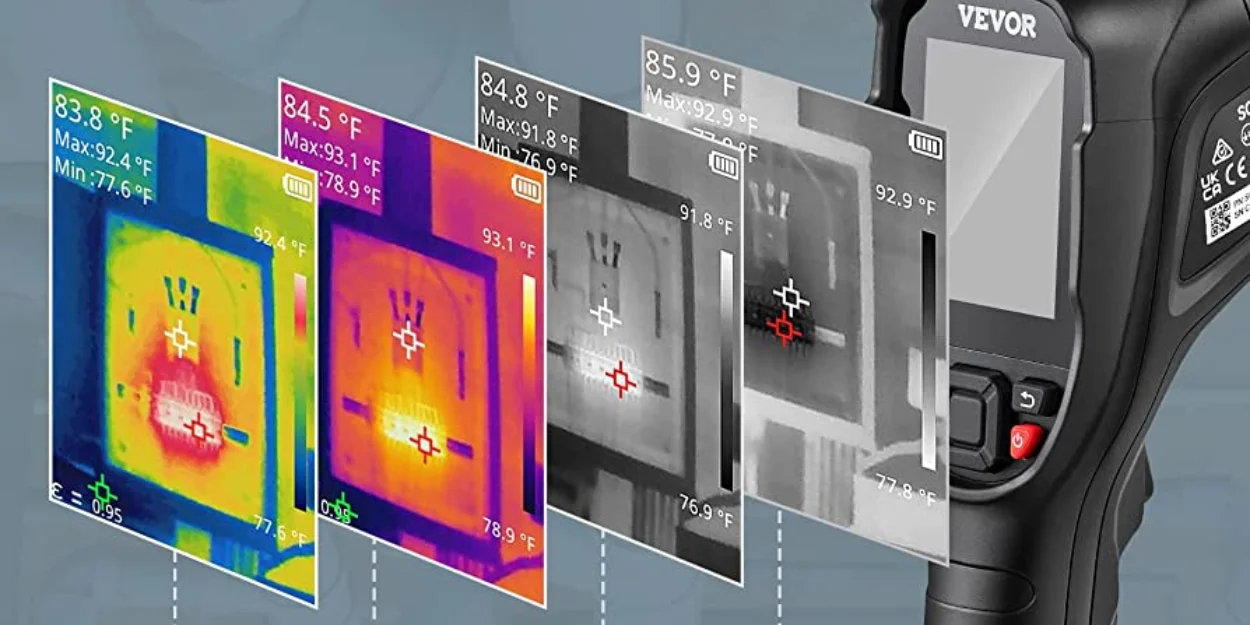
The magic of thermal cameras lies in their ability to capture and display infrared energy that is invisible to the naked eye. When you look through a thermal camera lens, warm objects appear as vibrant yellow-orange hues that intensify as their temperature increases. In contrast, colder things take on a blue or purple color.
But how do thermal cameras accomplish this feat? It all comes down to the science of infrared energy. This energy has a wavelength that starts at around 700 nanometers and extends to approximately 1mm. Any wavelength shorter than this becomes visible to the human eye.
FAQs about Thermal Imaging Cameras
1. Can Thermal Imaging Cameras See Through Walls?
Thermal imaging cameras are excellent tools for detecting surface temperatures, but they cannot see through walls. If a wall is thick enough to keep heat from escaping on one side without leaking to the other, thermal imaging won’t detect it. However, even though thermal imaging cannot see through surfaces, it can still reveal sensitive information about what’s happening inside a building.
2. How Accurate Are Thermal Imaging Cameras?
Several variables, such as emissivity, spatial resolution, detector and system noise, and temperature drift, influence the accuracy of a thermal camera. Taking all of these factors into account, the expected accuracy of thermal imaging cameras is no better than ±2° Celsius or ±3.6 °Fahrenheit.
3. What Is the Difference Between an Infrared Camera and a Thermal Camera?
Active infrared (IR) systems use short-wavelength infrared light to illuminate an area of interest. A picture is created when infrared radiation is reflected to a camera and processed. On the other hand, thermal imaging systems use mid or long-wavelength IR energy. Unlike active IR, thermal imagers are passive and only sense differences in heat.
4. Can Thermal Cameras Be Used for Home Inspections?
Thermal cameras are excellent tools for detecting things that may be invisible to the naked eye during a home inspection. They can see hot or cold spots and pick up patterns behind walls. Thermal imaging cameras are often used during building inspections and energy audits to identify issues by detecting surface temperature variations.
5. What Is the Price Range for a High-Quality Thermal Camera?
The cost of a thermograph varies greatly depending on their quality and features. For home inspectors, an average thermal imaging camera may cost between $600 and $2000. However, high-end thermal imaging cameras with advanced features can cost upwards of $5000. When selecting a thermal imaging camera, it’s essential to weigh the features you need against the cost to make an informed decision.
Conclusion
Each camera on the list offers unique features and specifications that make them suitable for different applications, from home inspections to professional detection of electrical or mechanical systems.
Overall, the VEVOR Thermal Imaging Camera is a top-performing thermal camera that provides exceptional value for its price. With its ability to detect invisible infrared waves and pinpoint problems during home inspections, HVAC troubleshooting, firefighting, and professional detection of electrical or mechanical systems, it offers a range of benefits to users. Its outstanding image clarity, wide temperature range, adjustable emissivity, and color palettes make it ideal for various applications. Its memory card’s ability to store many images is also a plus.

